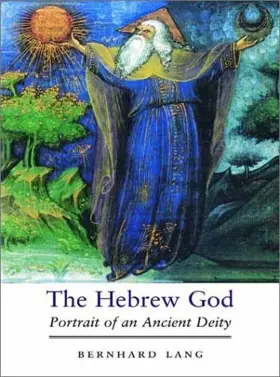

The Hebrew God: Portrait of an Ancient Deity
Pages
336
Publisher
Yale University Press
Published
3/1/2002
ISBN-13
9780300090253
Originally worshipped by the people of a small and politically insignificant eastern Mediterranean community, the Hebrew God rose to become the monotheistic deity of the entire Western tradition. In this absorbing book, well-known biblical scholar Bernhard Lang provides for the first time a full portrait of the ancient Hebrew God. Drawing on all available evidence, including ancient Near Eastern and Egyptian texts and art, Lang offers a comprehensive view of the Hebrew God that is both fascinating and surprising. Lang's portrait shows the Hebrew God in five images. He appears as lord of wisdom, lord of war, lord of the animals, lord of the individual, and lord of the harvest-a God whose rule extends to all areas of life. Lang illuminates the completeness of this God's leadership with insights derived from modern religious, anthropological, and cultural studies, and he argues that Israel's monotheistic God, far from being simply opposed to other gods, actually echoes and incorporates much of the ancient polytheistic experience of the divine. The worldview of the ancient Semites did not differ from that of the Indo-European peoples as dramatically as others have assumed, Lang contends. Written in an accessible style, this appealing volume stores a wealth of information for general reader and religious historian alike.
Reviews
Georges Dumézil (1898–1986) was a renowned philologist who exploited É. Durkheim’sobservations on the sociology of religion to help clarify and organize the images of godsoperative in Indo-European religious mythology. One of Dumézil’s importantcontributions was his advocacy of studying the gods according to their social function asperceived by society and not according to the etymology of their names and theiridentification with natural forces. A second contribution was his observation that Indo-European society was organized into three smoothly interlocked classes—priestly,nobility, and (food) producers—and that each generated its own myths about its ownparticular gods using its own metaphors. Consequently, Indo-European mythology, as awhole, could be analyzed by a trifunctional theory, its deities and myths related to one ofthree functions (sacerdotal, war, and life sustaining) and each associated with a particularsocial class.In The Hebrew God, Bernhard Lang, inspired by Dumézil’s idea but not chained to it,expands the number of functions for the purposes of his analyses into what he calls five“images”: Lord of Wisdom, Lord of War, Lord of the Animals, Lord of the Individual,and Lord of the Harvest (1–6, 12–13). The bulk of the book, chapters 3–17 divided intofive groups of three chapters each, treats each image covering similar matters, though notnecessarily in the same order.
[Full Review]
